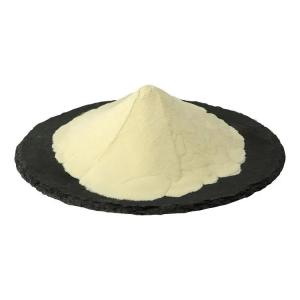News list
News Center
Hot Product
News
Nutritional awareness of phosphorus and phosphoric acid
Time:2025-10-23
1. Introduction
Phosphorus is an essential mineral required for numerous biological functions, including bone formation, energy production, and cellular repair. Phosphoric acid, a compound derived from phosphorus, is commonly used in the food industry as an additive to enhance flavor, preserve freshness, and regulate acidity. Understanding the relationship between natural phosphorus and added phosphoric acid is key to promoting nutritional awareness and balanced dietary habits.
2. Natural Sources of Phosphorus
Phosphorus naturally occurs in a wide variety of foods such as meat, poultry, fish, eggs, dairy products, nuts, beans, and whole grains. In these foods, phosphorus is bound in organic forms that are gradually absorbed by the body. These natural sources support normal physiological processes and contribute to overall nutritional well-being.
3. Phosphoric Acid in Food Processing
Phosphoric acid (H₃PO₄) is widely used in beverages, processed cheeses, and bakery products to control acidity and improve flavor stability. In industrial food production, phosphate compounds derived from phosphoric acid are also used to enhance texture and extend shelf life. Although safe within regulated limits, their increasing use in processed foods has raised discussions about total dietary phosphorus intake.
4. Balancing Phosphorus Intake
While phosphorus is vital to health, excessive intake—particularly from additives like phosphoric acid—can disrupt mineral balance, especially when calcium intake is low. Modern dietary awareness emphasizes not only consuming sufficient phosphorus but also maintaining an appropriate calcium-to-phosphorus ratio. This balance supports long-term nutritional stability and metabolic health.
5. Promoting Nutritional Awareness
Raising awareness about phosphorus and phosphoric acid involves both consumer education and transparent industry practices. Individuals are encouraged to read ingredient labels, limit processed foods, and favor natural food sources. Meanwhile, manufacturers can contribute by reducing additive levels and providing clearer information about phosphate content. These combined efforts support a more informed and health-conscious food culture.
6. Conclusion
Phosphorus and phosphoric acid play significant roles in both human nutrition and modern food production. However, maintaining awareness of their sources and quantities is essential for dietary balance. Through education, responsible consumption, and transparent labeling, consumers can achieve a healthier relationship with phosphorus while benefiting from safe and sustainable food choices.
Phosphorus is an essential mineral required for numerous biological functions, including bone formation, energy production, and cellular repair. Phosphoric acid, a compound derived from phosphorus, is commonly used in the food industry as an additive to enhance flavor, preserve freshness, and regulate acidity. Understanding the relationship between natural phosphorus and added phosphoric acid is key to promoting nutritional awareness and balanced dietary habits.
2. Natural Sources of Phosphorus
Phosphorus naturally occurs in a wide variety of foods such as meat, poultry, fish, eggs, dairy products, nuts, beans, and whole grains. In these foods, phosphorus is bound in organic forms that are gradually absorbed by the body. These natural sources support normal physiological processes and contribute to overall nutritional well-being.
3. Phosphoric Acid in Food Processing
Phosphoric acid (H₃PO₄) is widely used in beverages, processed cheeses, and bakery products to control acidity and improve flavor stability. In industrial food production, phosphate compounds derived from phosphoric acid are also used to enhance texture and extend shelf life. Although safe within regulated limits, their increasing use in processed foods has raised discussions about total dietary phosphorus intake.
4. Balancing Phosphorus Intake
While phosphorus is vital to health, excessive intake—particularly from additives like phosphoric acid—can disrupt mineral balance, especially when calcium intake is low. Modern dietary awareness emphasizes not only consuming sufficient phosphorus but also maintaining an appropriate calcium-to-phosphorus ratio. This balance supports long-term nutritional stability and metabolic health.
5. Promoting Nutritional Awareness
Raising awareness about phosphorus and phosphoric acid involves both consumer education and transparent industry practices. Individuals are encouraged to read ingredient labels, limit processed foods, and favor natural food sources. Meanwhile, manufacturers can contribute by reducing additive levels and providing clearer information about phosphate content. These combined efforts support a more informed and health-conscious food culture.
6. Conclusion
Phosphorus and phosphoric acid play significant roles in both human nutrition and modern food production. However, maintaining awareness of their sources and quantities is essential for dietary balance. Through education, responsible consumption, and transparent labeling, consumers can achieve a healthier relationship with phosphorus while benefiting from safe and sustainable food choices.


 CN
CN





